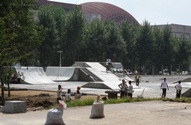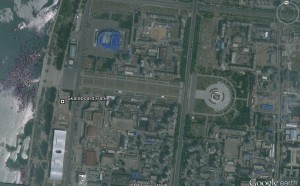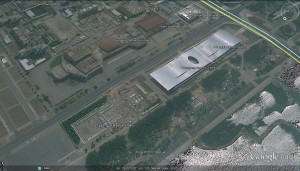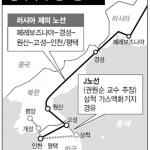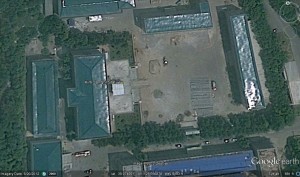UPDATE 5 (2012-10-15): China is donating USD$1m to the UN World Food Program for use in the DPRK. Accoridng to ReliefWeb:
The Government of China has recently announced a contribution of US$1 million to WFP’s operation in DPR Korea. The donation will be used to assist children and their mothers who are most vulnerable to undernutrition.
In July 2012, WFP started a new operation in DPR Korea, focused on providing nutritional support to women and children most at risk of malnutrition. Much of the food distributed comes in the form of Super Cereal – specialised nutritious foods designed to address vital mineral and vitamin gaps in the regular north Korean diet.
The generous contribution from China will be used to buy around 1550 metric tons of maize, which will be the base ingredient for Super Cereal manufactured in DPR Korea and then distributed for one month to 400,000 children in hospitals, orphanages, and kindergartens. Pregnant and nursing mothers will also receive food rations.
WFP is in urgent need of an additional 30,000 metric tons of maize and 4,000 metric tons of cooking oil to ensure that the most vulnerable women and children in DPR Korea receive the nutritional assistance they need of the coming winter months.
China is an increasingly important donor to WFP, contributing over US$20 million to WFP operations in 2011.
UPDATE 4 (2012-10-5): According to KBS, the South Korean NGO Council for Cooperation with North Korea delivered flour to Pyongyang:
The delivered the 260 million won worth of aid to Gaeseong to help North Korean residents suffering from the natural disasters through the Inter-Korean Transit Office. It plans to deliver an additional 500 tons of flour within this month.
Eleven representatives of the council, which represents 55 domestic humanitarian aid donors to the North, crossed the border to the North to send the flour.
UPDATE 3 (2012-9-24): Radio Free Asia reports (in Korean) that Agape International will be sending 21 tons of baby food to the DPRK. See the original article here. See the article in English via Google Translate here.
UPDATE 2 (2012-9-24): Russia just recently forgave the DPRK’s Soviet-era debt and opened a Russian-gauge railway line to Rason, where they lease a pier. Additionally, the Russians are interested in building a gas pipeline that extends to South Korea. They are also providing Food assistance via the UN World Food Program to the DPRK. According to Itar-Tass:
Russia has delivered more than 4,000 tonnes of flour to North Korea, the Emergencies Ministry’s Information Department told Itar-Tass on Monday.
According to the Emergencies Ministry’s representative, the aid to North Korea was rendered in the format of the memorandum of mutual understanding signed between the Russian government and the United Nations’ World Food Program.
“Over 4,100 tonnes of flour were delivered to North Korea by sea. A vessel with another batch of the same weight of flour is planned to be shipped out from the Nakhodka seaport to the North Korean seaport of Chongjin on September 27,” the Information Department said.
UPDATE 1 (2012-9-19): Indonesia will also be sending food assistance through the UN World Food Program. According to the Jakarta Post:
Indonesia will send food aid worth US$2 million in hopes of improving the famine crisis in North Korea, said Coordinating Peoples Welfare Minister Agung Laksono on Wednesday.
“[We] have coordinated with the National Disaster Mitigation Agency (BNPB) to send aid to the World Food Program (WFP), which will later distribute it to citizens of the Democratic People’s Republic of Korea,” he said in Jakarta as quoted by tempo.co.
Agung also hoped that the humanitarian aid, which was initiated by President Susilo Bambang Yudhoyono, would strengthen diplomatic ties between the two countries.
North Korea is in a food crisis after its crops and food reserves were damaged by extreme weather.
After receiving news of the support, North Korean Ambassador to Indonesia Ri Jong Ryul cited a Korean proverb that says “a real friend’s quality is shown in the time of hardship.”
ORIGINAL POST (2012-9-20): The DPRK is to receive at least 1,000 tons of flour from two different donors. These donors are were World Vision and JTS Korea, a Seoul-based Buddhist relief agency. Both gave 500 tons each via different channels. Interestingly, the World Vision assistance crossed the DMZ in trucks from South Korea. The assistance from JTS was shipped from South Korea to Dandong where it will be exported to the DPRK.
Some coordination might be in order?
See more below.
According to the Associated Press (via Calgary Herald):
North Korea has accepted a shipment of emergency aid from relief agency World Vision to help victims of floods that killed dozens of people and submerged large amounts of farmland.
Twenty trucks carrying 500 tons of flour crossed the border into North Korea on Friday. World Vision says the aid will be sent to children in the North’s central South Phyongan (PYONG-ahn) province.
South Korean civic associations are also sending assistance. According to the Korea Times:
JTS Korea, a Seoul-based Buddhist relief agency, said a freighter carrying 500 tons of flour left the port of Incheon, west of Seoul, and will soon arrive in North Korea via the Chinese port city of Dandong on the border with the North.
The civilian aid for North Koreans was sent after the North was hit by severe floods in recent months, which left hundreds of people killed or missing.
“Our officials plan to visit North Korea in the near future to monitor the distribution of aid,” a JTS Korea official said.
The shipment came after North Korea last week rejected an offer by the South Korean government to donate 10,000 tons of flour, instant noodles and medicine as flood aid.
Officials at Seoul’s Unification Ministry in charge of North Korean affairs said Pyongyang turned down the proposal and openly displayed anger at Seoul’s refusal to give what the North said it needs most — rice and cement.
Read the full stories here:
North Korea accepts emergency aid from World Vision to help flood victims
Associated Press
2012-9-20
S. Korean civic group sends flood relief to NK
Korea Times
2012-9-20

